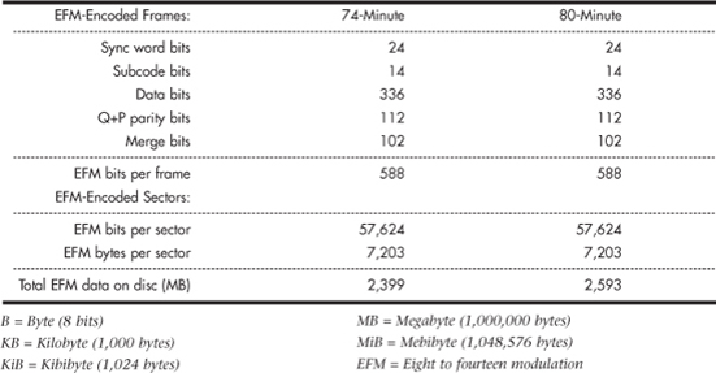Hardware Reference
In-Depth Information
distance between 1s is 3 bit time intervals (usually referred to as 3T), and the maximum
spacing between 1s is 11 time intervals (11T).
Because some of the EFM codes start and end with a 1 or more than five 0s, three addi-
tional bits called
merge bits
are added between each 14-bit EFM value written to the disc.
The merge bits usually are 0s but might contain a 1 if necessary to break a long string
of adjacent 0s formed by the adjacent 14-bit EFM values. In addition to the now 17 bits
created for each byte (EFM plus merge bits), a 24-bit sync word (plus three more merge
bits)isaddedtothebeginningofeachframe.Thisresultsinatotalof588bits(73.5bytes)
actually being stored on the disc for each frame. Multiply this for 98 frames per sector
and you have 7,203 bytes actually being stored on the disc to represent each sector. An
80-minute disc, therefore, really has something like 2.6GB of actual data being written,
which, after being fully decoded and stripped of error-correcting codes and other inform-
ation, results in about 737MB (703MiB) of actual user data.
The calculations for EFM-encoded frames and sectors are shown in
Table 11.4
.
Table 11.4 EFM-Encoded Data Calculations
To put this into perspective, see
Table 11.5
for an example of how familiar data would
actually be encoded when written to a CD. As an example, I'll use the letters
N
and
O
as
they would be written on the disc.
Table 11.5 EFM Data Encoding on a CD

